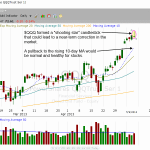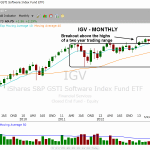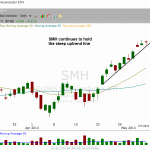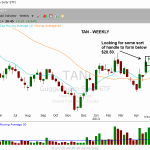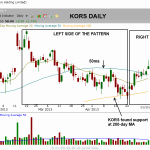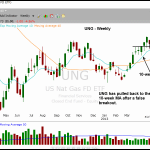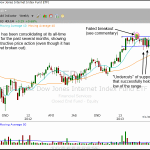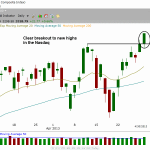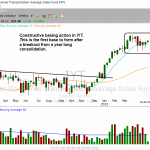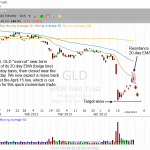After trading slightly lower and in a tight, sideways range throughout the first half of the day, stocks staged a rally attempt just after mid-day, but the buying interest was short-lived and the broad market drifted back down. The Nasdaq Composite dipped just 0.1%, but turnover in the exchange ticked 5% higher. Although the Nasdaq’s loss was not enough to count as a “distribution day,” the session was definitely indicative of bearish churning (stealth institutional selling into strength). The S&P 500 lost 0.4%, but on volume that was a bit lower than the previous day’s level. Because the broad market rallied in the early afternoon, but failed to hold onto those intraday gains into the close, several of the major indices formed a candlestick pattern known as a shooting star, a bearish reversal pattern that often precedes a near-term correction within an uptrend.
